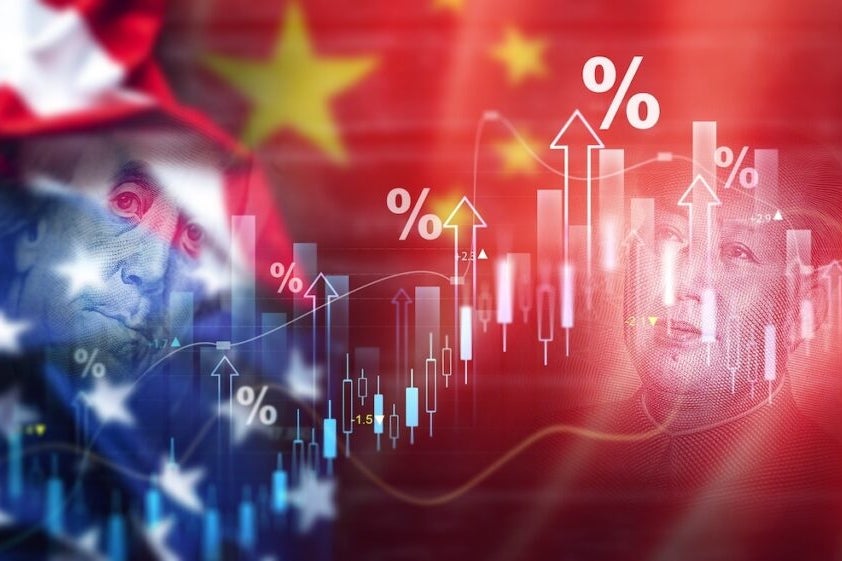U.S.-listed Chinese stocks rallied sharply Wednesday morning, as Beijing’s new stimulus targeting consumer loans and service-sector businesses signaled a deeper commitment to reviving domestic demand and supporting economic growth, adding to the momentum sparked two days earlier by President Donald Trump‘s extension of the U.S.-China trade truce.
Beijing Backs Borrowers, Bets On Consumption Revival
China’s Vice Finance Minister Liao Min said the country would begin offering interest subsidies to both households and businesses, aiming to lower borrowing costs and drive up domestic demand.
The policy includes a one-percentage-point annual interest subsidy for eligible loans, specifically targeting eight service-sector industries.
Consumer loan rates remain above 3%, and the subsidy is designed to boost credit uptake without putting additional pressure on bank margins.
Wang Bo, an official from the Ministry of Commerce, said the initiative aims to “expand domestic demand and stabilize employment,” noting that service consumption has significant room for growth.
US-Listed Chinese Stocks Rally
Optimism swept across Chinese ADRs in early New York trading. Among the leaders:
- Alibaba Group Holding Limited BABA rose 3.3% by 10:33 a.m. ET
- JD.com Inc. JD gained 0.7%
- PDD Holdings Inc. PDD added 0.4%
- Tencent Music Entertainment Group TME rose 2.6%, after a double-digit gain Tuesday amid strong quarterly earnings.
- Baidu Inc. BIDU added 3.3%
- Li Auto Inc. LI jumped 2.7%
Chinese-focused ETFs also rallied:
- iShares China Large Cap ETF FXI up 2.8%
- KraneShares CSI China Internet ETF KWEB up 3.6%
- iShares MSCI China ETF MCHI up 3%
Tariff Truce Buys Time For Markets
On Monday, President Trump announced a 90-day extension of the U.S.-China trade truce, sidestepping what could have been the most severe escalation in the trade war to date.
In a post on Truth Social, Trump said he signed an executive order to extend the current agreement and confirmed that “all other elements of the Agreement will remain the same.”
Without the extension, tariffs on Chinese goods would have surged from the current 30% to 145% starting August 12, while China had planned to raise duties on U.S. goods from 10% to 125% — effectively creating a trade embargo.
Instead, the status quo remains in place: a 30% U.S. tariff on Chinese imports and a 10% Chinese tariff on U.S. goods.
Read Next:
Photo: Miha Creative on Shutterstock.com
Market News and Data brought to you by Benzinga APIs
© 2025 Benzinga.com. Benzinga does not provide investment advice. All rights reserved.


